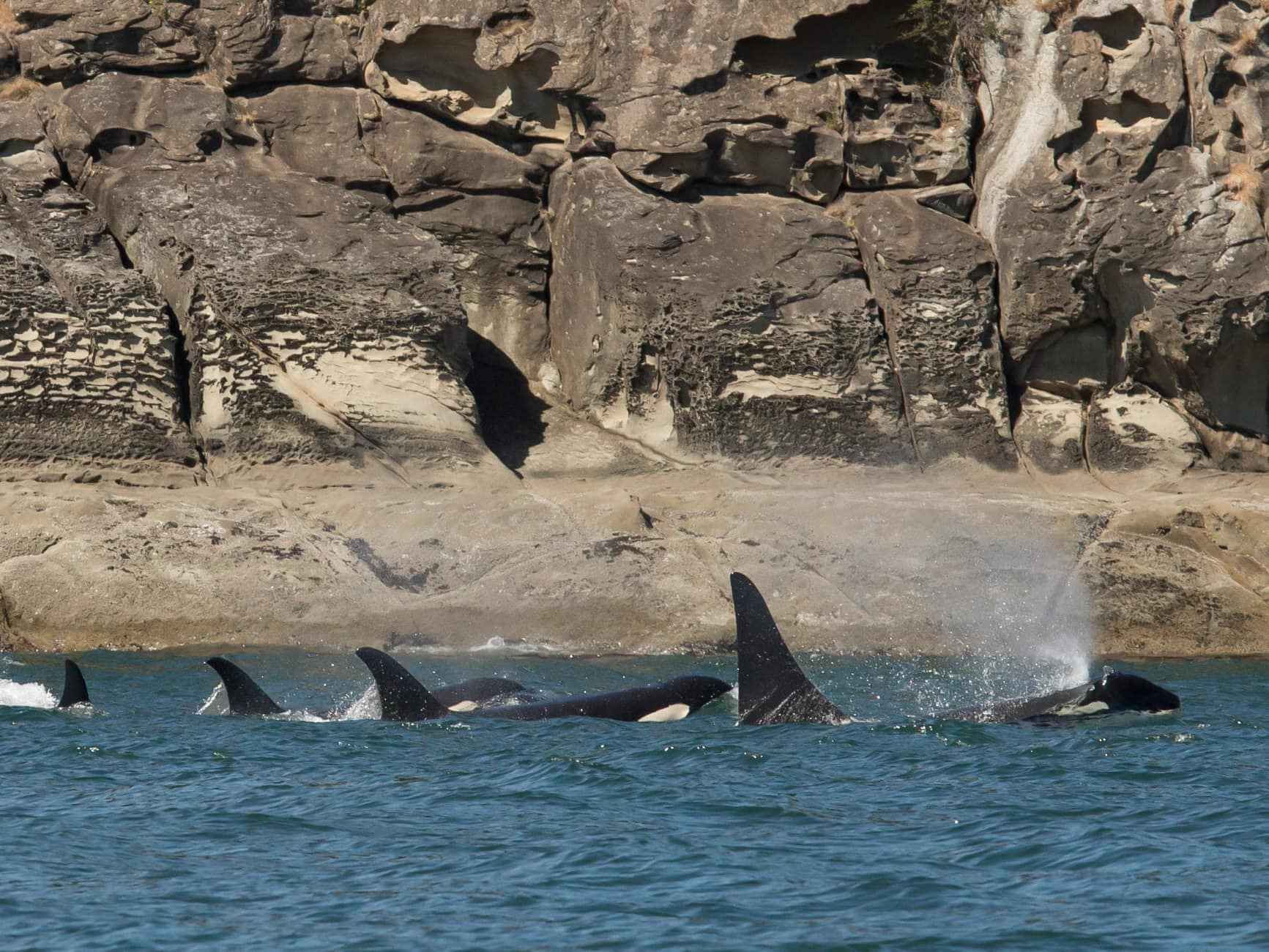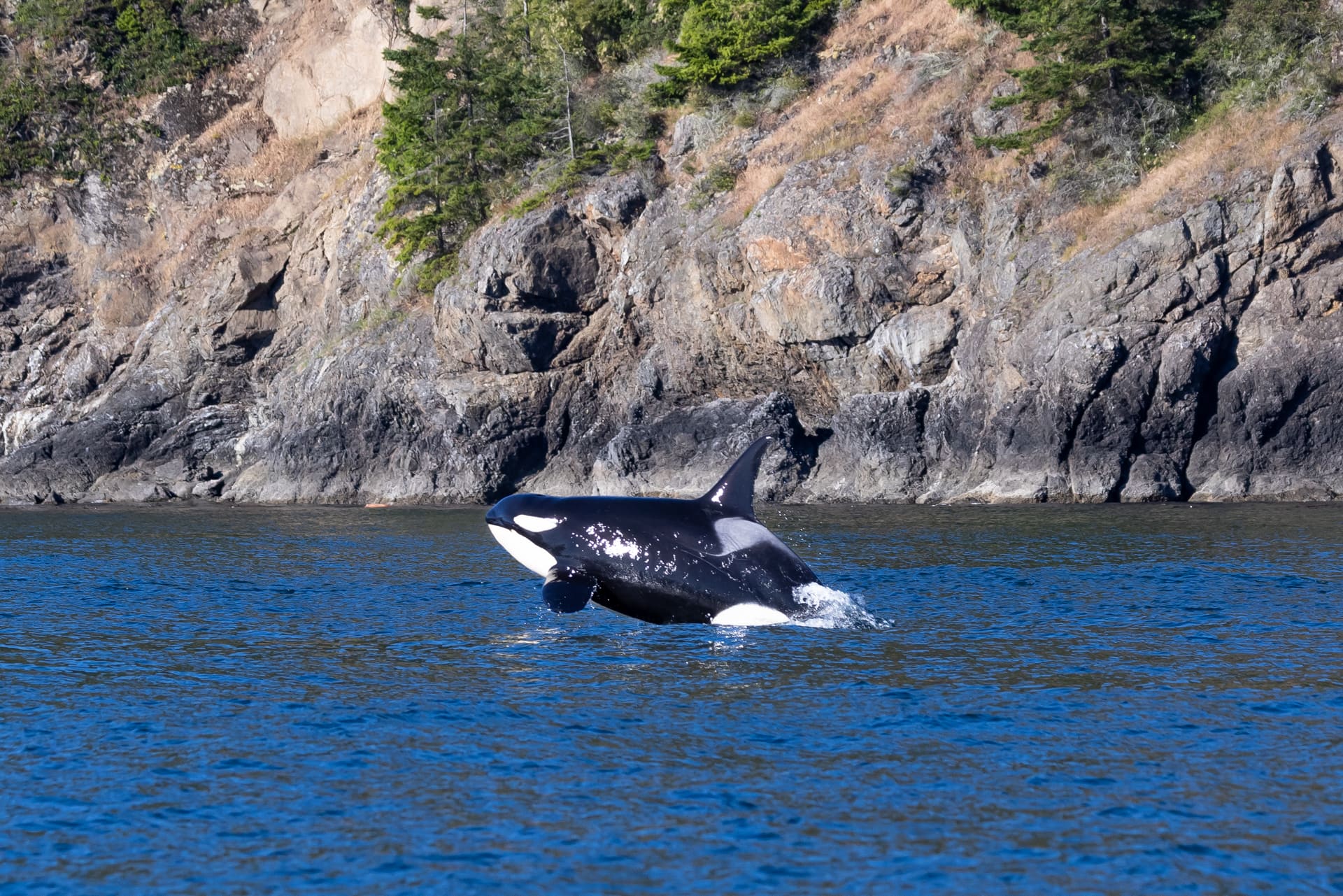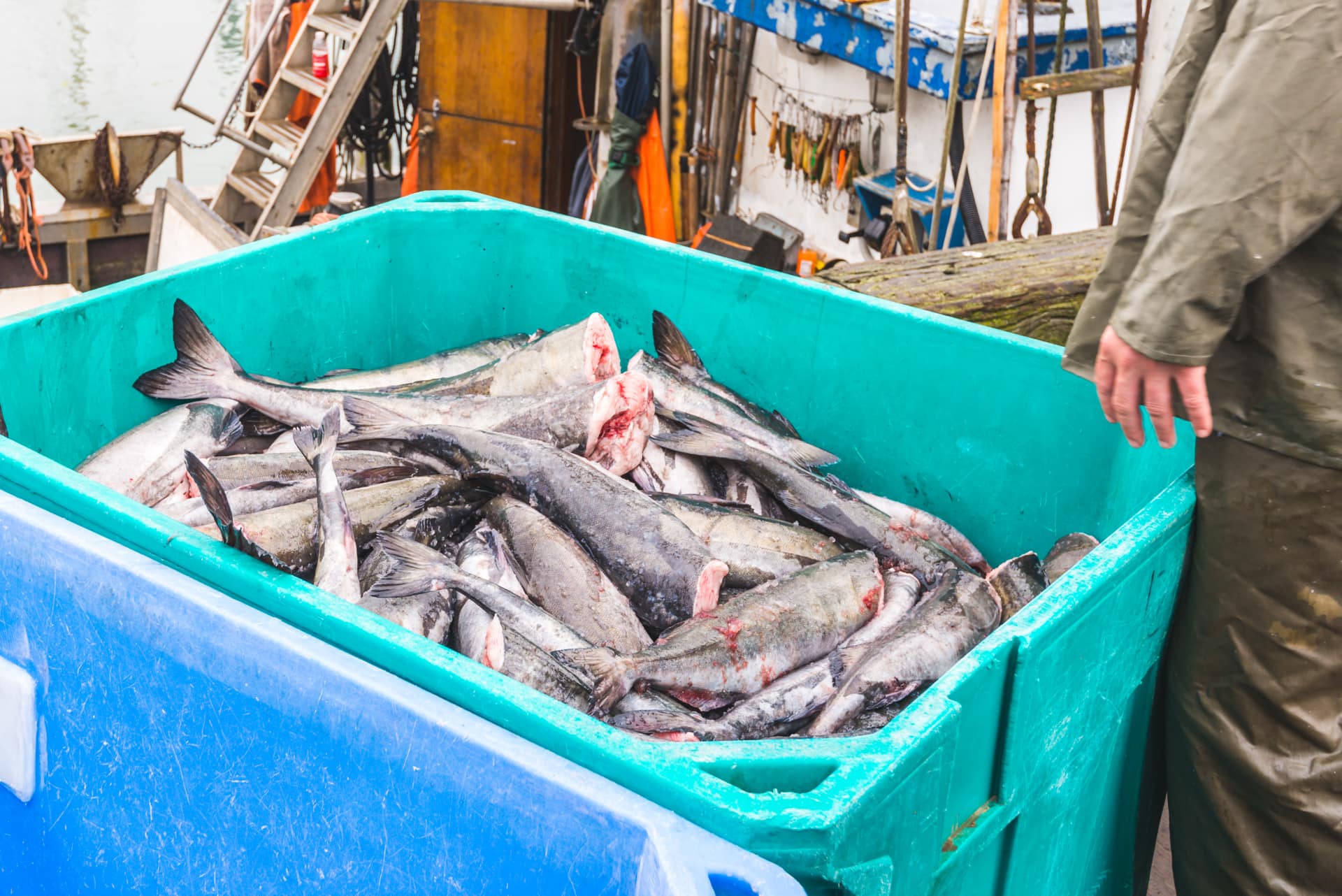The truth is, we don’t know. Just because we give these whales names, such as White Gladis or Granny, doesn’t mean to say we really know them. Scientists have only been studying orcas for the last 50 years, and most of that concentrated on the Southern Resident killer whales—one discreet population out of an untold number across the world’s oceans.
These resident orcas in the Pacific Northwest are fish-eaters yet are known to catch harbor porpoise but not eat them. Why? We don’t know that yet, either. We can’t interpret their language and understand what they’re thinking, but we know they’re highly intelligent, and what they’re doing is, without a doubt, intentional. While they know its purpose, we can only speculate.
A few years ago, a Southern Resident killer whale was seen “wearing” a salmon as a hat. This act was quickly mimicked across the population, but it only lasted a season,
“It’s possible,” said Giles, “that the disabling of rudders is also a fad. Orcas may be imitating behaviors they’re witnessing, and it’s spreading between family groups. Perhaps like salmon hats, it will soon become last year’s fashion.”
Yet we do know that if these orcas were trying to sink boats, they would have done so. You only have to witness their incredible coordination when hunting—i.e., swimming in formation to knock a seal off an ice flow—to know that they can solve problems and predict their actions. Yet they’ve never been known to injure or kill any human in the ocean.
With this particular group of “boat attacking” orcas, once the rudder is disabled, the orcas seem to lose interest and move on much more like playtime than mealtime.
So no, orcas are not taking revenge, but given that they are one of the most contaminated mammals on the planet, perhaps they could be forgiven if they were.
Giles concluded, “We’ve outcompeted them for food, contaminated their waters, and drowned out their calls with our noise. Our presence is felt every day in the ocean, their home. Southern Resident killer whales are threatened with extinction, and while the media is focused on the benign act of a few animals thousands of miles away, this community of 73 is struggling for survival.”
This “why” is not a mystery.





